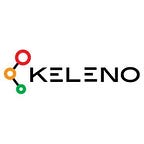How Fog computing gonna outsmart cloud computing?
Hello Fog computing, Good bye cloud computing !!
This is a paradigm where cloud computing is extended to the edge of the network. Similar to Cloud, Fog provides data, compute, storage, and application services to end-users. The distinguishing Fog characteristics are its proximity to end-users, its dense geographical distribution, and its support for mobility. Services are hosted at the network edge or even end devices such as set-top-boxes or access points. By doing so, Fog reduces service latency, and improves QoS, resulting in superior user-experience.
Fog Computing supports emerging Internet of Things(IoT) applications that demand real-time/predictable latency (industrial automation, transportation, networks of sensors and actuators). In the IoT scenario, a thing is any natural or man-made object that can be assigned an IP address and provided with the ability to transfer data over a network. Some such things can create a lot of data. Cisco provides the example of a jet engine, which they say can create 10 terabytes (TB) of data about its performance and condition in a half-hour. Transmitting all that data to the cloud and transmitting response data back puts a great deal of demand onbandwidth, requires a considerable amount of time and can suffer from latency.
In a fog computing environment, much of the processing would take place in a router, rather than having to be transmitted. Fog computing creates a highly virtualized platform that provides compute, storage, and networking services between end devices and traditional cloud computing data centers. These services are the building blocks of both the cloud and the fog. They’re also critical for supporting the emerging wave of Internet deployments — most notably the Internet of Things (IoT). Internet deployments require mobility support and geo-distribution, location awareness, real-time interactions, and low latency. Also important is the ability to support a very large number of nodes in highly heterogeneous environments. Fog Computing can enable a new breed of aggregated applications and services, such as smart energy distribution. This is where energy load-balancing applications run on network edge devices that automatically switch to alternative energies like solar and wind, based on energy demand, availability, and the lowest price.
Take a look what internet of things is going to be in a few years from now!
Another example are smart traffic lights. A video camera senses an ambulance’s flashing lights and then automatically changes streetlights for the vehicle to pass through traffic. Also through Fog Computing, sensors on self-maintaining trains can monitor train components. If they detect trouble, they send an automatic alert to the train operator to stop at the next station for emergency maintenance. The new Cisco IOx capability takes advantage of Fog Computing. This will allow customers and solution providers across industries to develop, manage, and run software applications directly on Cisco industrial networked-devices. This includes hardened routers, switches, and IP video cameras. This development puts applications closer to where IoT creates actionable data. As a result, it will be much easier to manage the colossal amount of data projected in a hyper-connected world.Adoption of Fog Computing will also accelerate innovation in ways never seen before. This includes self-learning, self-organizing, and self-healing applications for massively distributed industrial networks.
Take a look at this DHL Big Data Scenario and think about it for a while. DHL needs to maintain its marketshare by embedding the things into its whole logistics chain (distribution, supply chain, environmental, market intelligence).
Follow us on Linkedin
